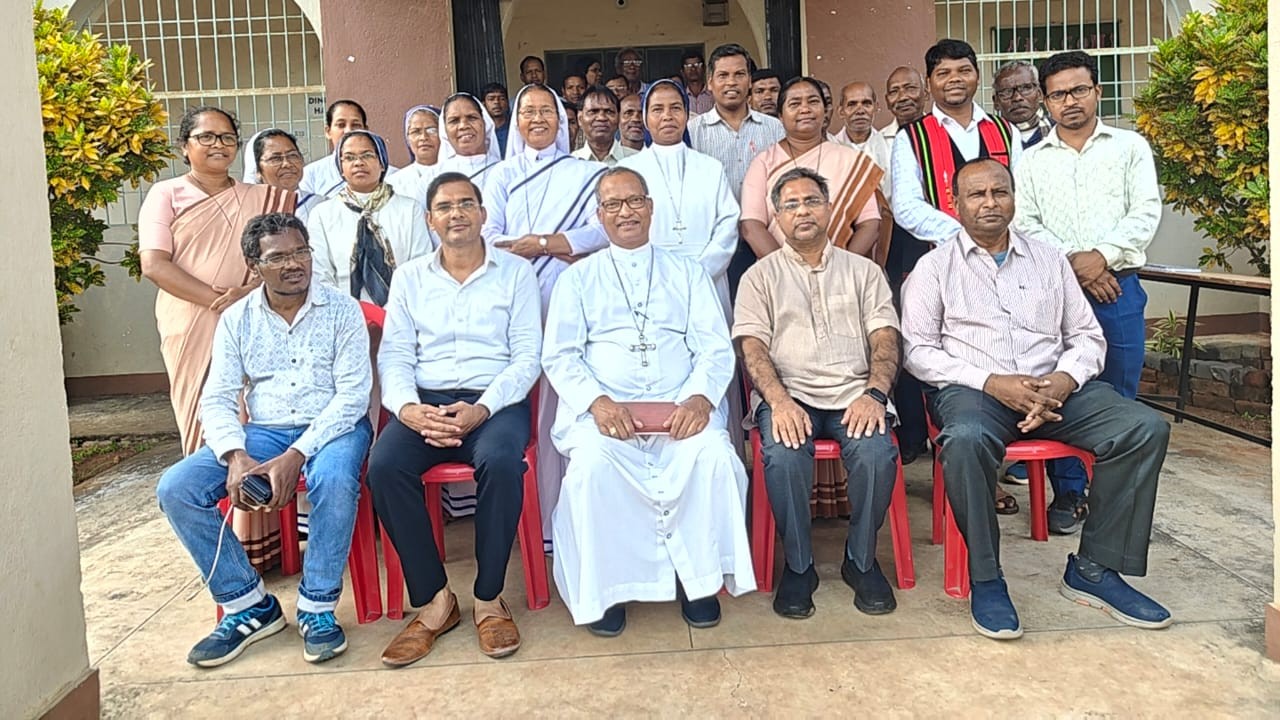Research Report: Digital Platforms, Health Behaviors, and Sustainable Development Goals among Sexual Minority Men
This report summarizes a study on dating application usage, identity, and sexual health behaviors among sexual minority men (SMM) in the United States, analyzing the findings through the lens of the United Nations Sustainable Development Goals (SDGs).
Introduction: Contextualizing Health Disparities within the SDGs
The study investigates the intersection of digital technology and public health, a critical area for achieving several SDGs. For sexual minority men, digital platforms are vital for social connection but also present challenges to health and well-being. This research directly informs efforts related to SDG 3 (Good Health and Well-being), SDG 5 (Gender Equality), and SDG 10 (Reduced Inequalities) by examining health disparities and knowledge gaps within a marginalized community.
Methodology
An online survey was administered to a sample of 549 gay and bisexual men in the U.S., aged 18–50. The survey collected data on:
- Dating application usage patterns
- Self-identified “tribe” affiliation
- Sexual activity and condom use
- Awareness and utilization of pre-exposure prophylaxis (PrEP)
Key Findings and Alignment with Sustainable Development Goals
Finding 1: Digital Engagement and Sexual Health Practices
The data reveals high engagement with dating applications, which significantly influences health-related behaviors. These findings present both challenges and opportunities for achieving SDG 3, Target 3.3 (end the epidemics of AIDS and other communicable diseases).
- High Usage: 69.4% of participants reported using dating apps.
- Primary Motivation: The most common reason for use was seeking casual sex (46.3%).
- Condom Use: A significant portion of sexually active participants (39.9%) did not use a condom during their last sexual encounter, indicating a critical gap in preventative health practices.
Finding 2: Gaps in Preventative Health Knowledge and Access
A substantial deficit in awareness and uptake of PrEP highlights significant health inequalities, directly impacting progress toward SDG 3 and underscoring the need to address SDG 10 (Reduced Inequalities) in healthcare access and education.
- Lack of Awareness: 33.5% of participants had never heard of PrEP.
- Low Uptake: Among those aware of PrEP, only 17.8% were currently using it.
This knowledge gap represents a major barrier to ensuring healthy lives and promoting well-being for all, a core tenet of SDG 3.
Finding 3: Digital Identity and Community Norms
The expression of “tribe” identity within these digital spaces reveals complex social dynamics that can influence health decisions. While these communities support identity expression, aligning with the inclusive spirit of SDG 5 and SDG 10, they may also reinforce appearance-based norms that affect sexual decision-making.
- Diverse Affiliation: Participants identified with various groups, including “Clean-cut,” “Bear,” and “Jock.”
- No Universal Affiliation: Notably, 32.1% of participants reported no tribe affiliation, indicating the diversity of identity within the SMM community.
Conclusions and Recommendations for Advancing the SDGs
The study concludes that dating applications are a major factor shaping health behaviors and communication patterns among SMM. To advance the Sustainable Development Goals, targeted interventions are necessary.
Recommendations
- Enhance Health Literacy (SDG 3): Develop and deploy inclusive, culturally responsive health interventions on digital platforms to close knowledge gaps regarding condom use and PrEP.
- Reduce Health Inequalities (SDG 10): Implement targeted public health campaigns to ensure equitable access to information and preventative healthcare like PrEP for all members of the SMM community, regardless of their digital engagement or identity.
- Promote Inclusive Digital Environments (SDG 16): Foster collaboration between public health bodies and technology companies to ensure platform design and digital discourse promote positive health outcomes and support the well-being of marginalized communities.
SDGs, Targets, and Indicators Analysis
1. Which SDGs are addressed or connected to the issues highlighted in the article?
-
SDG 3: Good Health and Well-being
The article directly addresses health by focusing on the sexual health behaviors of sexual minority men (SMM). It discusses sexual health risks, condom use, and the awareness and use of pre-exposure prophylaxis (PrEP) to prevent HIV infection, all of which are central to ensuring healthy lives and promoting well-being.
-
SDG 5: Gender Equality
While often focused on women and girls, SDG 5 also includes targets related to ensuring universal access to sexual and reproductive health. The article’s emphasis on “Advancing Inclusive Sexual Health: Education and Empowerment for LGBTQIA+ and Minority Communities” aligns with this goal by advocating for the health rights and needs of a specific minority group that faces unique challenges and discrimination.
-
SDG 10: Reduced Inequalities
The study focuses on a specific minority population (SMM) and highlights disparities in health knowledge and behaviors. By examining the unique factors influencing this group, such as dating app use and “tribe identity,” and calling for “inclusive, culturally responsive interventions,” the article directly addresses the need to reduce health inequalities faced by the LGBTQIA+ community.
2. What specific targets under those SDGs can be identified based on the article’s content?
-
Under SDG 3: Good Health and Well-being
- Target 3.3: By 2030, end the epidemics of AIDS, tuberculosis, malaria and neglected tropical diseases and combat hepatitis, water-borne diseases and other communicable diseases. The article’s focus on condom use and PrEP awareness and uptake are direct strategies aimed at preventing the spread of HIV, which is central to ending the AIDS epidemic.
- Target 3.7: By 2030, ensure universal access to sexual and reproductive health-care services, including for family planning, information and education. The article highlights significant “gaps in sexual health knowledge,” particularly regarding PrEP, and underscores the need for better education and interventions, which aligns with this target.
-
Under SDG 5: Gender Equality
- Target 5.6: Ensure universal access to sexual and reproductive health and reproductive rights. The research calls for inclusive sexual health education and empowerment for LGBTQIA+ communities, directly supporting the principle of universal access to health information and services for all, irrespective of sexual orientation.
-
Under SDG 10: Reduced Inequalities
- Target 10.2: By 2030, empower and promote the social, economic and political inclusion of all, irrespective of… sex… or other status. The article advocates for “inclusive, culturally responsive interventions” tailored to the specific needs and digital communication patterns of SMM, promoting their health inclusion.
- Target 10.3: Ensure equal opportunity and reduce inequalities of outcome. By identifying specific health disparities, such as low PrEP awareness and inconsistent condom use within the SMM community, the article points to inequalities in health outcomes that need to be addressed to ensure this group has an equal opportunity for good health.
3. Are there any indicators mentioned or implied in the article that can be used to measure progress towards the identified targets?
-
Indicators for SDG 3 (Targets 3.3 and 3.7)
- Condom Use Rate: The article provides a specific metric: “39.9% did not use condoms during their last sexual encounter.” This can be used as an indicator to measure risk behavior related to the spread of sexually transmitted infections, including HIV.
- PrEP Awareness Level: The finding that “33.5% had never heard of it [PrEP]” serves as a direct indicator of gaps in sexual health education and information, relevant to Target 3.7.
- PrEP Uptake Rate: The statistic that “Only 17.8% of those aware of PrEP were currently using it” is a key indicator for measuring the adoption of crucial HIV prevention methods, relevant to Target 3.3.
-
Indicators for SDG 10 (Targets 10.2 and 10.3)
- Disparities in Health Knowledge: The rate of PrEP awareness within the SMM sample (66.5% aware, 33.5% unaware) is an indicator that can be compared to other populations to measure inequalities in access to critical health information.
- Disparities in Preventative Health Behaviors: The rates of condom and PrEP use among the SMM participants serve as indicators of health behavior disparities. Tracking these figures over time can measure progress in reducing inequalities of health outcomes for this minority group.
4. Create a table with three columns titled ‘SDGs, Targets and Indicators” to present the findings from analyzing the article. In this table, list the Sustainable Development Goals (SDGs), their corresponding targets, and the specific indicators identified in the article.
| SDGs | Targets | Indicators |
|---|---|---|
| SDG 3: Good Health and Well-being |
Target 3.3: End the epidemic of AIDS and other communicable diseases.
Target 3.7: Ensure universal access to sexual health-care services, information, and education. |
|
| SDG 5: Gender Equality | Target 5.6: Ensure universal access to sexual and reproductive health and reproductive rights. |
|
| SDG 10: Reduced Inequalities |
Target 10.2: Empower and promote the social inclusion of all.
Target 10.3: Ensure equal opportunity and reduce inequalities of outcome. |
|
Source: frontiersin.org







